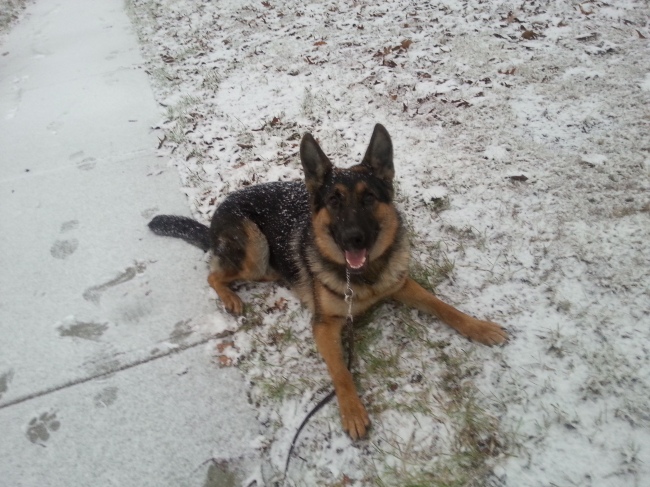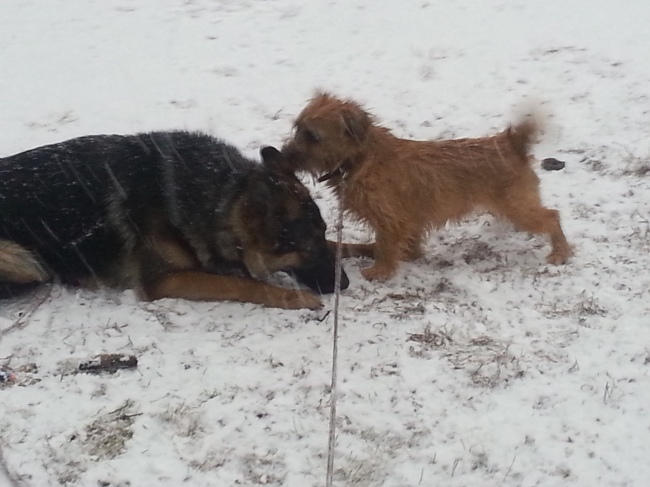I could go easy on myself and say I looked like a manatee back in 2000, but honestly, I looked more like a slow-moving whale. I was pregnant with my son and ways much larger than any book claimed I would be.
I remember my dad calling me one morning. While he always spoke with an authoritative tone, this was a much more candid tone than I usually heard from him. He said to me, “I want you to make me a promise.” In my 33 years, my dad had never asked me to make him a promise. I couldn’t imagine what kind of commitment he was asking. It has been said that when my dad spoke, affectionately known as the Captain, people would quiver and quickly say, “Yes, sir.” It was the same for me. “Yes,” I said without even knowing what. “Promise me you will never leave the baby alone with the dogs.” Um ok, I was a little surprised that he asked me that, but obviously, it was important to him. I respected him and his wishes. I kept that vow to him long after my children were babies, and even long after he passed.
As a dog trainer, I did know better, but you also never think it will happen to you. When my babies were born, I shared my home with a Rottweiler, German Shepherd, Belgian Malinois, an All American dog, four cats, numerous foster dogs along with boarding school students here and there.
If I went to answer a ringing phone, in addition to putting my children in their cribs, behind their baby gate or in their pack and play, I would then put the dogs into their crates. Growing up in a kennel, three doors between dogs and the outside world, also known as loose dog, is something that is drilled into you. One door is never enough. Two is good, three covers you for mistakes and the perfect storm. Incidentally, if you left any of the three kennel doors open, you were fired immediately on the spot. I made sure that there were at least two in between my children and the dogs. “Of course, you did. You had one of those Rottweilers or German Shepherd. They are mean.” I hear you! I have to tell you those were great dogs. I never had a problem with them. Not with my children, not with guests in the home, or even out. They were all CGCs, and my Rottie was a registered therapy dog. The stereotype of certain breeds being vicious is for another post.
As my children grew up, and at the age where I could leave them alone for a little while, the dogs went in their crates. We all teach our children about stranger danger, but what about “Fight Flight.”? What is “Fight flight”? If any dog gets into a fight, go straight into your room. Do not pass go, do not collect $200. Fortunately, my dogs got along very well, and I know how to handle a multidog household. I ingrained it into my children from day one. However, I instilled into them how to manage a multidog home over the years, and “Fight Flight” was one of them.
It was only until my youngest was about 13 that I would actually allow ONE fo the dogs out with her when I would leave. That was her very undersized Pug. All of the others had to go in their crates. Maybe I was hypervigilant. But it certainly paid off.
Dog bites are on the rise. Usually, they rise in the summer, but during this quarantine, they are growing, and it is not the mailman or the kid down the street, it is our own children and family members. There are lots of reasons for it. Even Governor Cuomo has said his dog is getting annoyed with everyone being home. I address these reasons in my Stress, and Quarantine article found here.
How do we keep our children and family members safe?
- Do NOT leave your dog alone with your child!!!!
- Go pull the crate out of the basement. Start using it again. This is not a punishment. This is a place to give your dog time to relax. Let your dog spend the time in the crate.
- Start playing games with the kids and the dogs. Here are some ideas: Musical chairs. When the music stops, put the dog in a sit-stay, and they can get up when you get up.
- The old proverb, “Let sleeping dogs lie” is applicable here quite literally. Leave the dog alone. If the dog is sleeping, let him sleep. If the dog is eating, let him eat
- Give your dog time to nap. If your kids are running around for hours on end with the dog, they will become overstimulated and end up acting like an overtired toddler.
- If the dog is chewing a bone or playing with another toy, leave it be.
- Stop overtraining your dog. I was working with someone when the quarantine began. The owner was guilty of overtraining her dog, and she expected her dog to be perfect, not right away, but yesterday. Proper training, like fine wine, takes time. Many people have wanted to take this time to work with their dog, which is excellent; giving your dog two twenty-minute sessions a day is sufficient. Longer and more sessions can create problems. Your dog is a dog, let them grow and blossom at their own rate.
- If the dog does something that the shouldn’t DO NOT hit the dog. Your dog perceives that as an attack. Your dog eventually responds by attacking you the next time you strike him with a hand, paper, or whatever it may be. A verbal correction, a shake can, or a Pet Corrector is more effective.
These are some simple ways to decrease the risk of a dog bite. I spoke to someone this morning who read on one of her Facebook groups that someone had just adopted a dog last week. The dog has claimed one of her children as his, guards that child’s room and has snapped at the other child. This is not good. The new owner was soliciting advice from her Facebook mom group. While they may be filled with dog lovers and owners, the information was less than stellar. If you are having trouble such as growling, snapping, guarding, you need to call a trainer IMMEDIATELY! While trainers are not allowed to do lessons during this quarantine, they are undoubtedly available online, and good ones with give you excellent tools for an effective strategy to improve the situation immediately.
Implementing the above tips will help keep you and your family safe during an unsettling time. Your dog will still love you, and it is perfectly normal to feel anxious. Help ease your dog’s anxiety and make his life as peaceful as you want yours to be.
Until next time, Happy Training!
Yours for better dogs always,
Babette






